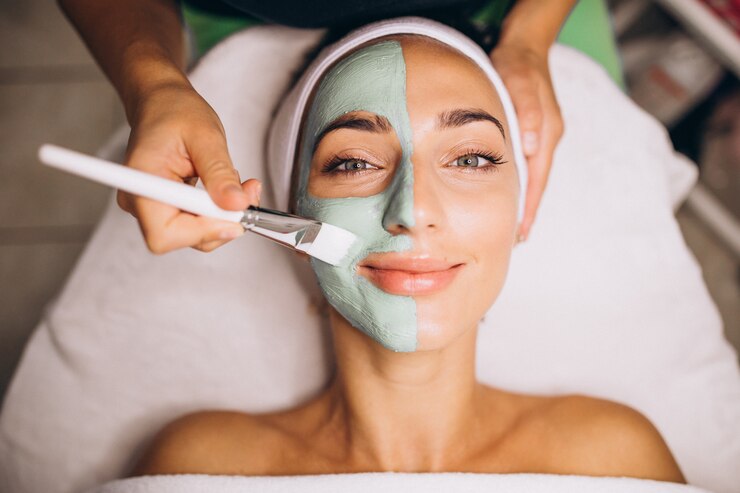Mandelic peels have gained popularity in the skincare world for their gentle yet effective exfoliating properties. Derived from bitter almonds, mandelic acid is an alpha-hydroxy acid (AHA) known for its ability to improve skin texture, tone, and overall appearance. If you’re considering a Mandelic Peel in Dubai, it’s important to understand whether this treatment aligns with your skincare goals, skin type, and concerns.
1. Understanding Mandelic Peels
Mandelic peels work by exfoliating the outer layer of the skin, removing dead skin cells and promoting cell turnover. This process helps reveal smoother, brighter skin underneath while stimulating collagen production. Unlike other stronger peels, mandelic peels have a larger molecular structure, which allows for slower penetration into the skin. This feature makes them suitable for individuals with sensitive skin or those who have never undergone chemical peels before.

2. Identifying Your Skin Concerns
Before deciding if a mandelic peel is right for you, consider your specific skin concerns:
a. Acne and Breakouts
Mandelic acid is effective for treating acne-prone skin due to its antibacterial properties. If you struggle with breakouts, clogged pores, or oily skin, a mandelic peel may help reduce the frequency and severity of your acne.
b. Hyperpigmentation
If you have dark spots, sun damage, or uneven skin tone, mandelic peels can assist in lightening these areas. The exfoliating action helps fade hyperpigmentation, leading to a more uniform complexion over time.
c. Fine Lines and Wrinkles
For those concerned about the early signs of aging, mandelic peels can stimulate collagen production, enhancing skin firmness and elasticity. Regular treatments can help diminish the appearance of fine lines and wrinkles.
d. Uneven Texture
If you have rough, dull, or uneven skin texture, mandelic peels can provide gentle exfoliation to smooth the surface. This treatment can make your skin look fresher and more radiant.
3. Skin Type Considerations
Mandelic peels are generally suitable for all skin types, including:
a. Sensitive Skin
Due to its gentle nature, mandelic acid is an excellent choice for those with sensitive skin. It causes minimal irritation compared to other stronger acids, making it ideal for individuals who may react poorly to harsher treatments.
b. Oily and Combination Skin
If you have oily or combination skin, mandelic peels can help regulate oil production and reduce the appearance of enlarged pores, making them a good fit for your skincare regimen.
c. Dry Skin
While mandelic peels can benefit dry skin by promoting hydration and cell turnover, it’s crucial to ensure your skin is adequately moisturized post-treatment to avoid further dryness.
4. Possible Side Effects
While mandelic peels are generally safe, it's important to consider potential side effects:
a. Mild Redness and Irritation
After a mandelic peel, some individuals may experience temporary redness or irritation. This reaction typically subsides within a few hours to a day.
b. Peeling and Flaking
Mild peeling or flaking may occur as the skin begins to shed dead cells. This process is a normal part of the exfoliation and usually resolves quickly.
c. Sun Sensitivity
After undergoing a mandelic peel, your skin may become more sensitive to sunlight. It's essential to apply a broad-spectrum sunscreen daily to protect your skin from UV damage.
5. Consultation with a Skincare Professional
Before committing to a mandelic peel, it’s advisable to schedule a consultation with a licensed skincare professional. During this appointment, you can discuss your skin concerns, medical history, and goals for treatment. A professional can evaluate your skin type and condition, recommending whether a mandelic peel is the most appropriate option or if alternative treatments may be more beneficial.
6. Preparing for Your Mandelic Peel
If you decide that a mandelic peel is right for you, proper preparation is essential to ensure optimal results:
a. Skincare Routine Adjustment
In the weeks leading up to your peel, consider adjusting your skincare routine. Avoid products that contain strong acids, retinoids, or exfoliating agents for several days before the treatment to minimize irritation.
b. Avoid Sun Exposure
Limiting sun exposure prior to your peel can help reduce the risk of complications and sensitivity. Always wear sunscreen when outdoors, especially if you have been in the sun.
c. Hydration
Keep your skin hydrated by using a gentle moisturizer leading up to the treatment. Well-hydrated skin responds better to peels.
7. Post-Peel Care
Following your mandelic peel, proper aftercare is crucial for achieving the best results:
a. Moisturization
Keep your skin hydrated with a gentle, non-comedogenic moisturizer to support healing and minimize dryness.
b. Sunscreen Application
Apply a broad-spectrum sunscreen daily to protect your skin from harmful UV rays, as it will be more sensitive post-peel.
c. Avoid Harsh Products
For a few days after the treatment, avoid using harsh exfoliants, retinoids, or other active ingredients that could irritate your skin.
Conclusion
Mandelic peels can be an effective treatment for a variety of skin concerns, especially for those with sensitive skin. By understanding your specific needs, skin type, and potential side effects, you can make an informed decision about whether a mandelic peel is right for you. Always consult with a qualified skincare professional to tailor the treatment to your individual requirements and to ensure the best possible results for your skin. With proper care and maintenance, a mandelic peel can lead to a brighter, healthier complexion.





Comments